Think you may want to jump into chicken keeping so that you have a daily supply of fresh eggs? Are you wondering what are the best egg laying chickens for backyard raising? We are going to answer that!
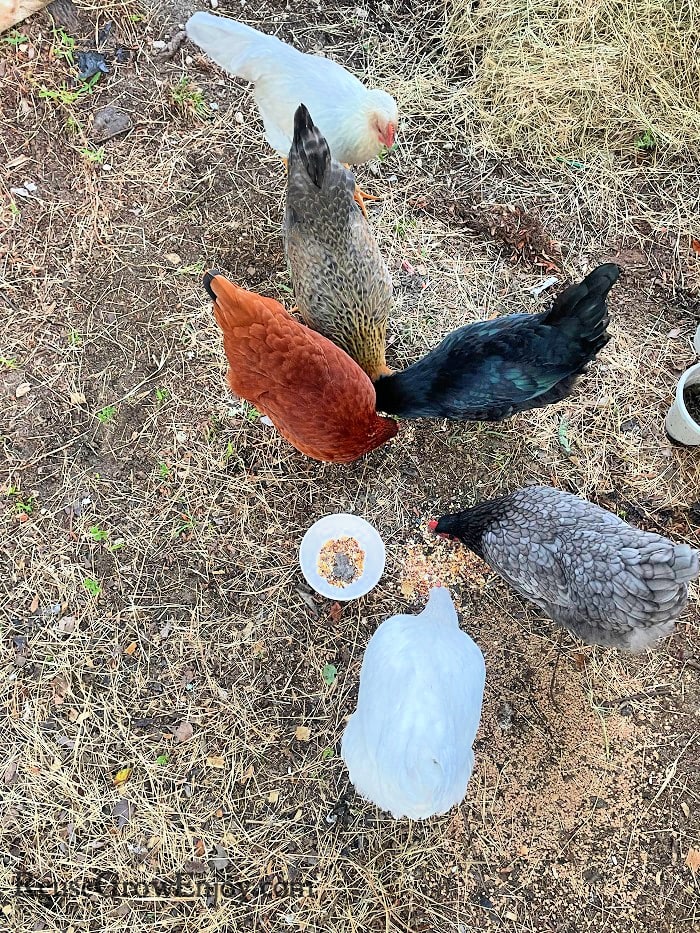
Chickens make an amazing addition, they are relatively easy to take care of, amusing, and provide you with food, as well as a rich fertilizer for your garden or container plants!
Depending on the breed of chicken you may find yourself with a new lap pet if you intend on letting them free range. I have compiled a list of the Best Egg Laying Chickens for Backyard.
Are you looking to keep chickens for the eggs? These breeds are the most prolific egg layers and would make a great addition to your homestead chicken coop or backyard flock!
Chickens start to lay eggs at around 4-6 months of age, so if you start with hatching eggs or baby chicks just know that you will have a bit of a wait before they start producing. Also know that when they first start laying, it is normal for the eggs to be small.
Whether you are looking for pretty chickens, longevity in laying, the biggest eggs, or lots of eggs I have a breed here that you will love, I also recommend mixing your flock to include all of those benefits!
Before we dive in, it is a good idea to cover a couple of words that may be unknown to new chicken owners.
Dual-Purpose Chickens – This simply means is one of the best chicken breeds that has been bred to be good for meat production as well as good egg layers.
Broody – This refers to a hen that is inclined to sit on and incubate its eggs rather than lay and move on.
Best Egg Laying Breeds Of Chickens:
Every breed of chicken lays eggs. So any breed you choose will give you fresh eggs. However, there are some that are better than others. Below you will find the different breeds that have been found to be the best layers. This list is listed in no special order.
Plymouth Rock:
Pretty chickens and fun to watch. They lay only about 200 eggs per year and decrease after year 3, BUT, they can lay eggs for up to 10 years, making them a great choice for longevity when your other hens have stopped laying. Plymouth rock chickens are also dual-purpose birds if you wish to use them for more than just eggs.
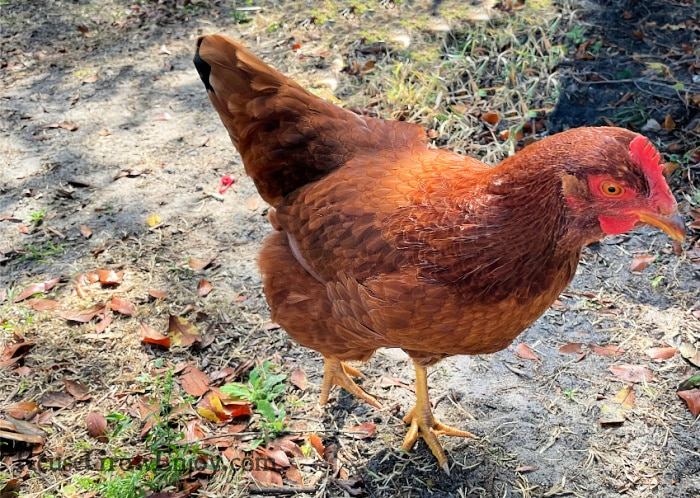
Rhode Island Red
Rhode Island Red:
These bright beauties are gentle and produce large brown eggs, up to 300 per year. They start laying as young as 16 weeks old and the egg size will increase over the years. With Rhode island red chickens you can expect about 5-6 eggs a week. RIR are dual-purpose birds meaning they are bred for laying as well as eating.
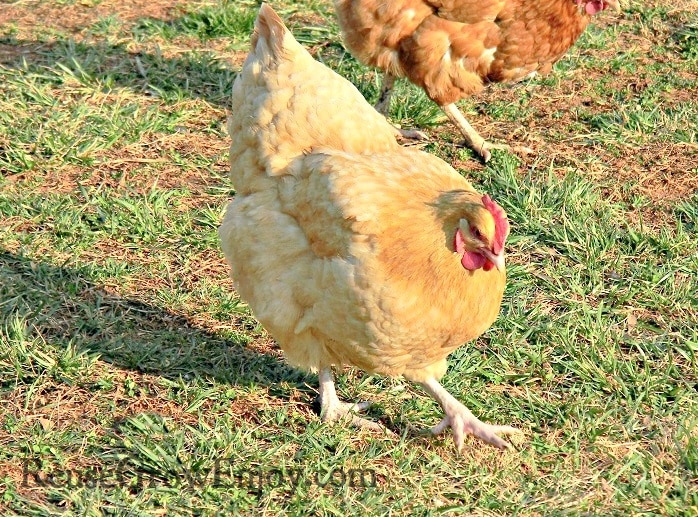
Buff Orpington Chicken
Orpingtons:
They are friendly, curious, and are a docile breed, a good choice with smaller children. They lay over 200 eggs per year. You can choose from a wide color palette, the most popular Buff Orpington, but also…White, Black, Cuckoo, Blue, Spangled, Red, Partridge, Chocolate, Lavender, Lemon Cuckoo, Golden Laced, Silver Laced, Ermine, and Diamond Jubilee.
Only some of the colors are recognized by the American Poultry Association but that doesn’t affect their egg laying ability or their beauty! While they appear quite large the majority of their bulk is from their thick fluffy feathers. Orpingtons are dual purpose and can be raised for meat or eggs.
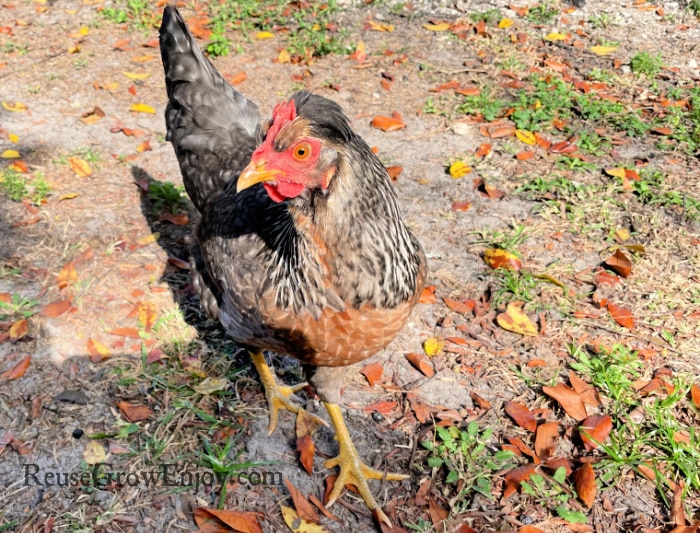
Easter Eggers
Easter Eggers:
These are mixed breed chickens and come in all sorts of sizes and colors. They are not a breed recognized by the American Poultry association but they produce beautiful eggs that can be any shade of blue or brown, and occasionally pink or pale yellow. They lay about 200 large eggs per year. Definitely, add these if you want to fill a beautiful egg collecting basket!

White Leghorn
White Leghorn:
Leghorn chickens are known for their egg production, averaging 280-320 white extra large white eggs or jumbo eggs per year. They come in two different types, those bred for industrial use and the “heritage”. The heritage breed is much more suited to hobby backyard farms. Another benefit is that they rarely go broody and are bred to lay.
Black Stars:
These are another hybrid breed and are beautiful birds. These chickens are medium-sized chickens that get to be around 5 pounds for the hens. They lay around 300 large brown eggs per year. While allowing your chickens to free range is always best, this is a breed that as long as they have enough space per chicken they can tolerate being enclosed well.
Golden Comet:
A Golden comet chicken is known to be a gentle chicken that gets to be around 5-8 pounds. They are not known for being broody. On average they lay around 280-300 large brown eggs per year. They are also a great choice if you live in cold weather as they are a breed that tolerates cold climates well. This is another cross breed that are friendly birds. They love people and often do not mind being picked up. These also tend to start laying eggs earlier than breeds. They normally start egg production around 15 weeks that along may be a good reason to add a few to your flock.
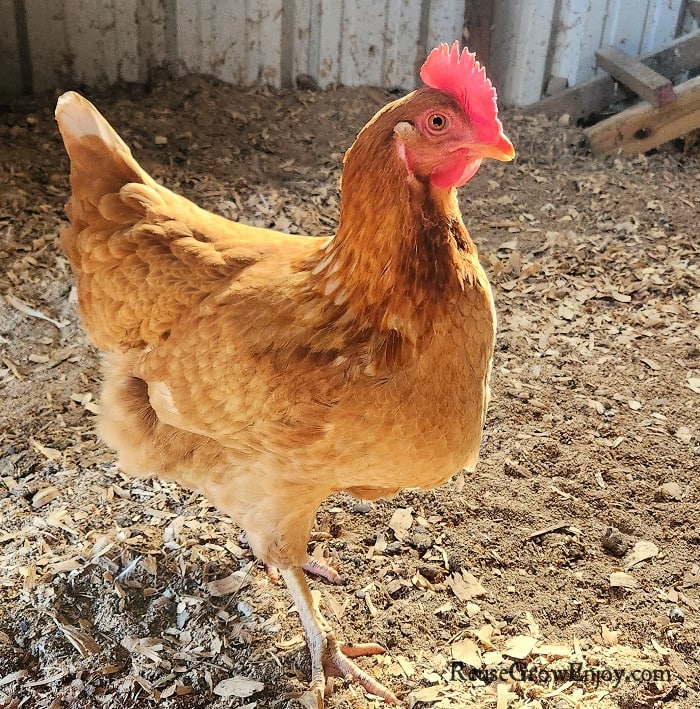
Isa Browns Hen
Isa Browns:
These hybrid breeds of chickens are good layers. They lay around 300+ eggs per year making them one of the best egg laying chickens. Their eggs are large to extra large and are brown in color. While it is unknown what breeds they originally came from, most have said they are a cross of a Rhode island red and a white breed of chicken such as a white Leghorn. Because this is a hybrid breed it will not live as long as a heritage breed.
Brahma:
Sturdy large chickens, they can easily grow to 10 pounds or more, and while on the list they are one of the lowest layers at an average of 150 per year. However, they also tend to lay throughout the winter months when other breeds stop or reduce laying, making them a great addition to mix in. Brahmas can go broody, which is good if you would like to increase your flock yourself rather than buying more from a hatchery.
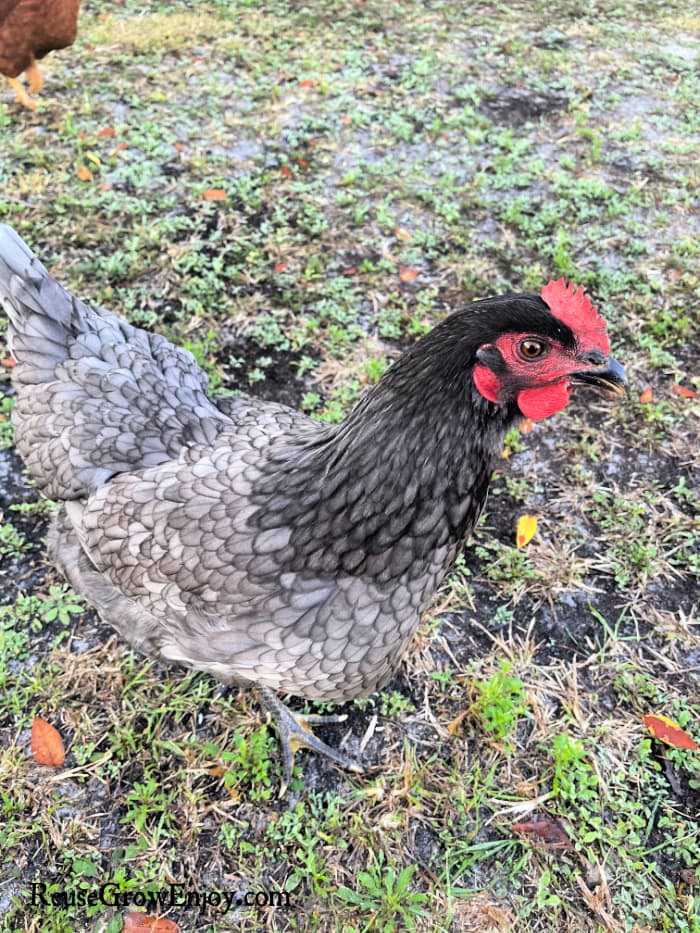
Australorp
Australorp:
Lay 250 pinkish to light brown eggs per year and are a great beginner chicken, they are pretty easy to care for and have a very calm and friendly disposition. You can find them in black, blue, and white. Australorps are bred for dual purpose, as meat birds and also layers.
Wyandotte:
If you want a good amount of eggs and a gorgeous set of feathers these scene stealers lay around 200 large brown eggs per year. The most common colors for wyandotte chickens are silver and golden laced wyandottes. They also continue laying throughout winter when other breeds may stop altogether.
Frequently Asked Best Egg-Laying Chickens Questions:
Q. Is there a way to get chickens to lay more?
A. The answer to this question is yes and no. While there are some things to do to help them lay more per year, you do have to keep in mind that chickens hardly ever lay more than one egg per day. You can see more on the things you can do in my post Tips To Help Your Chickens Lay More Eggs.
Q. Do you have to have a rooster to get eggs from hens?
A. The short answer is no. There are only two reasons to keep a rooster with your chickens. The main reason is to fertilize the eggs if you will be hatching your own chickens. Without the rooster, the eggs are not fertilized and will never result in baby chicks. The other reason to consider keeping a rooster with your hens is for protection. They help look out for the hens and will warn them of things like hawks.
Q. Do you have to feed egg layers a special diet?
A. Yes. While they can eat all kinds of food that are on the list of What Can Chickens Eat you just want to make sure they get plenty of protein and calcium. They also need to have a fresh supply of water at all times.
Q. If you have different types of chickens and the eggs are different colors, do they taste different?
A. No matter the egg color the eggs still all taste the same.
More Questions:
Q. Do eggs from backyard chickens taste different from eggs you get at the grocery store?
A. While a backyard chicken’s egg still tastes like an egg, the quality is better than the eggs you get from the store.
Q. What is the difference between a free-range chicken and one kept in a coop?
A. Free-range chickens tend to be healthier and happier. While it is ok to keep chickens enclosed, you just want to make sure they have plenty of room and are not crammed into small spaces.
Q. If you free-range your chickens, do you still have to feed them?
A. Choosing to free-range your chickens really is the best choice. They are known to be good foragers but may not always be able to find all the foods around that they need to produce plenty of eggs. So supplemental feeding will be needed to make sure they have a balanced diet. However, the good thing about free range is it will greatly reduce your feed bill.
What If You Want To Raise Chickens For Meat & Eggs?
This question takes a little longer to explain so we are giving it its own subheading to cover it in depth.
If you are wanting to get the best bang for your chicken-buying buck, it is best to choose chickens that can be used for both. While you could technically eat any chicken some just do not get much meat on them. So if you are wanting to have chickens for both meat and eggs, it is best to select one of the Dual-Purpose breeds.
The other thing to keep in mind is how you select your meat chickens. Keep in mind that egg production tends to drop off after a bird is a few years old. So you may want to start a rotation and use the older birds as your meat and replace them with younger birds to keep a robust egg production.
One of the things people most often do not think about when raising meat chickens is the steady need to replace chickens. Because of this, unless you plan to keep buying chickens, you will also need to keep a rooster. That way he can fertilize the eggs and you can raise your own. If you don’t want your chickens to turn broody (because they stop lying while they are sitting) you may want to consider getting an incubator to hatch eggs yourself.
Best Egg Laying Chickens Summary:
Eggs are such a nutritious food and can be used in so many ways. There is nothing quite like the discovery of your very first egg from your backyard chickens! While there are tons of different breeds of chickens that will give you eggs not all are the same.
Amount Of Eggs:
Some will give you a lot of eggs whereas others will give you fewer eggs.
Living Longer & Start Lyaing Earlier:
Also, some breeds such as the heritage breeds live longer than others. Whereas some will start laying earlier in life. Some chickens can be used for meat and or egg raising where as some are mostly just raised for one or the other.
Space & Climate:
When considering the right breed for you, you also have to think about the area you live. If in a colder climate, you will need hardy birds that can handle the cold. If you only have small areas to keep chickens, you will need to choose a breed that handles being enclosed well.
Food Producers or Pets Too:
When choosing you also want to think about what you want from your chickens. Do you want just something to give you food or do you also want to have a great breed that also has friendly personalities so they can also be pets? I have to say from my own experience when you have ones that are also friendly, it makes chicken keeping so much fun!
Sometimes when you can’t really narrow down which are the right chicken breeds for you, it is best to just pick a few different ones to mix it up. Then you not only have some laying early but you also have hens living longer. Plus the variety of colors of the birds and all the colorful eggs are just nice to look at.
So which are your favorite breeds or the best egg laying chickens for your yard?

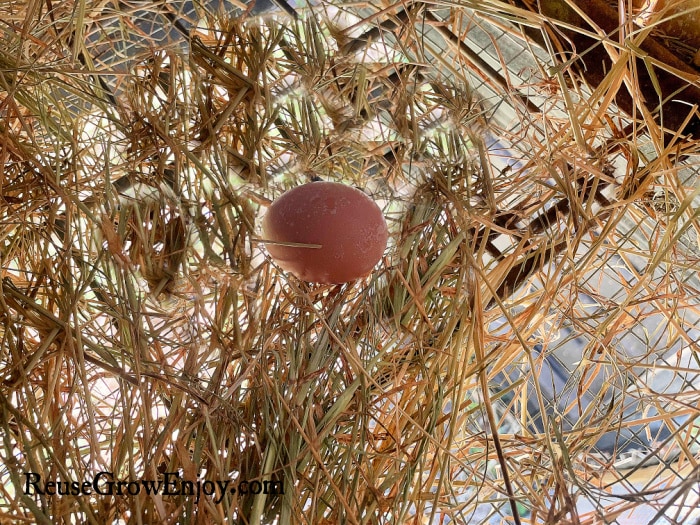
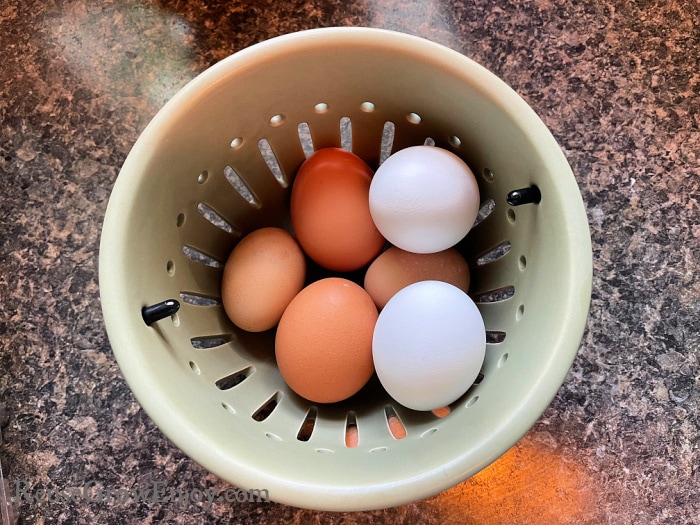

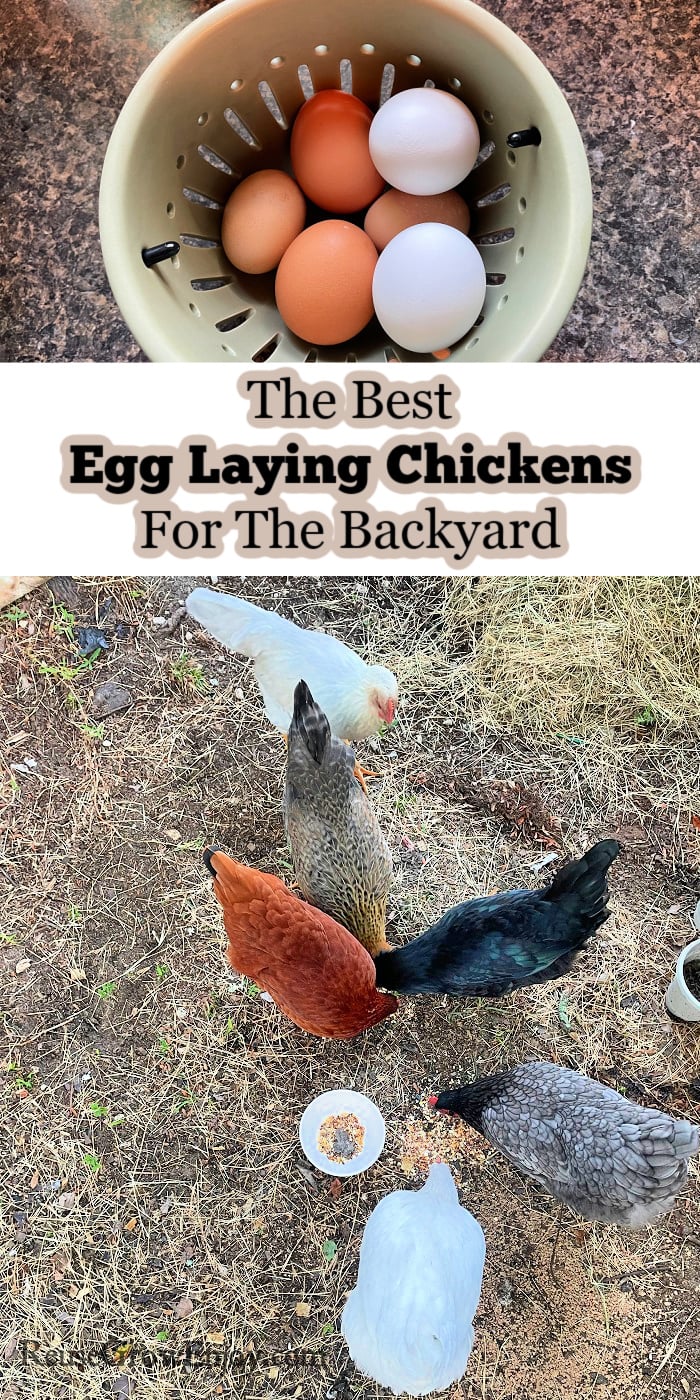

Leave a Reply